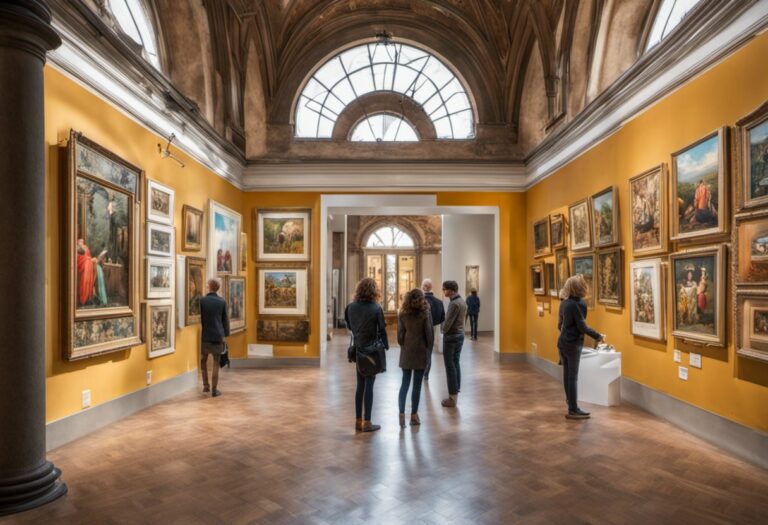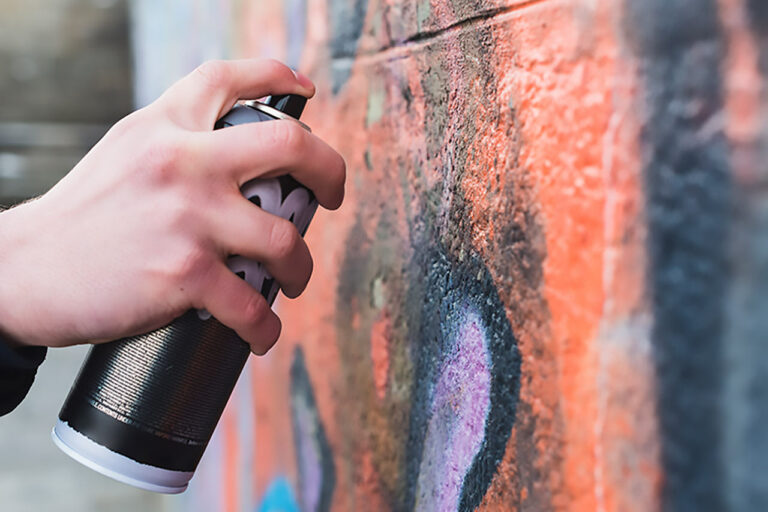5 Stunning Rome Fountains (And Then Some) That Aren’t The Trevi
Rome’s fountains aren’t just any fountains. They’re grand, they’re iconic, and they’re steeped in legends that would make even a Hollywood scriptwriter blush.
Picture this: a Baroque masterpiece that has seen emperors come and go, the perfect backdrop for countless Instagram selfies and, let’s not forget, the ‘make-a-wish’ pit stop for every starry-eyed visitor. Yes, I’m looking at you, Trevi Fountain.
But Rome’s fountain game doesn’t start and end with Neptune and his seahorses. Oh no, this city is a veritable outdoor museum of liquid art. From Bernini’s marvels to the unassuming yet historically rich spouts sprinkled throughout Rome’s quaint neighborhoods, the fountains here don’t just decorate; they narrate stories, myths, and a dash of Roman extravagance.
We’re diving into the most famous fountains in Rome–the ones you absolutely must see if you consider yourself a true culture vulture. So, fill up that reusable water bottle and put on your most comfortable sandals; we’re going on a fountain-hopping tour that promises splashes of grandeur.
Significance of Fountains in Rome
Rome, the Eternal City, is known for its stunning architecture, rich history, and of course, its magnificent fountains. As you explore the city, you’ll quickly notice that fountains play a significant role in the Roman landscape. With over 2,000 fountains scattered throughout Rome, they serve not only as artistic masterpieces but also as symbols of the city’s enduring connection to water.
You might be wondering why there’s so much focus on fountains in Rome. The city’s historical affinity for water is deeply rooted in its ancient past. Rome was built on top of fresh water sources, and to supply the growing city, aqueducts were constructed to channel water from nearby springs. Monumental fountains became a vital part of the urban landscape, giving people access to clean water while also showcasing the city’s wealth and influence.
As you make your way through Rome, you’ll encounter several famous fountains that are worth checking out. For instance, the Trevi Fountain is a well-known masterpiece and a must-see when you’re in town. Standing 26 meters tall and 49 meters wide, this Baroque-style beauty was built on top of an ancient water source and recently underwent an in-depth restoration led by the luxury fashion house Fendi.
Another must-see fountain is the Fountain of Neptune in Piazza Navona. This iconic fountain, along with its fellow fountains in the same square, showcases the artistic prowess of Rome while bringing to life the mythological tales of the Roman gods.
Throughout Rome, you’ll also discover numerous lesser-known but equally impressive fountains. From the monumental to the quirky, these fountains are reminders of Rome’s long-standing relationship with water and its importance to the city’s development.
Beyond the Trevi Fountain: Famous Fountains in Rome and Their Locations
Rome, the Eternal City, is filled with stunning fountains that display the city’s rich history and artistic talent. We’ll dive into five iconic fountains (that aren’t the Trevi Fountain), their locations, and what makes them must-see attractions.
Fountain of the Four Rivers
Located in the Piazza Navona, the Fountain of the Four Rivers is a marvel of Baroque art. Designed by Gian Lorenzo Bernini in 1651, this masterpiece represents four major rivers from the continents: the Nile (Africa), Ganges (Asia), Danube (Europe), and Rio de la Plata (America). Don’t miss this showstopper when exploring the city.
Triton Fountain
The Triton Fountain can be found in Piazza Barberini. Designed by Bernini in 1643, the Fontana del Tritone features a striking image of Triton, a mythological sea god, blowing a spout of water through a conch shell.
Fountain of Neptune
Head over to Piazza del Popolo to discover the Fountain of Neptune. Completed in 1823 by Giovanni Ceccarini, Fontana del Nettuno portrays Neptune wielding his trident alongside Roman sea gods. This stunning work of art is a must-see for any lover of mythological stories and statues.
Fountain of the Naiads
Make your way to Piazza della Repubblica to find the Fountain of the Naiads. With its sensual nature, the Fontana delle Naiadi is one of Rome’s most provocative fountains. Dating from the 19th to the early 20th centuries, it features four sea nymphs embracing various aquatic creatures. Witness this unique example of Rome’s artistic passion.
Fountain of the Turtles
Last but not least is the Fountain of the Turtles, situated in Piazza Mattei. Created by Taddeo Landini in 1588, the Fontana delle Tartarughe is an elegant fountain adorned with bronze turtles. It’s a charming spot to relax and enjoy the picturesque piazza.
Architectural Details of Fountains in Rome
When you’re strolling around Rome, you’ll surely come across some stunning fountains that flaunt amazing architectural details. Let’s dive into a few of these architectural marvels.
The Trevi Fountain is a sight to behold, designed by Nicola Salvi and completed by Giuseppe Pannini in 1762. It’s a perfect example of Italian Baroque architecture. This massive fountain features intricate statues of Oceanus and Triton, surrounded by detailed sculptures of aquatic creatures like dolphins and seahorses.
Another stunning fountain is the Four Rivers Fountain (Fontana dei Quattro Fiumi) in Piazza Navona, designed by Gian Lorenzo Bernini. The fountain represents four major rivers from different continents – the Nile in Africa, the Ganges in Asia, the Danube in Europe, and the Rio de la Plata in America. At the center of it all is an imposing Egyptian obelisk. Bernini’s ingenuity in the fusion of sculpture and architecture really shines in this masterpiece.
Continuing on your architectural journey, you’ll encounter Giacomo Della Porta’s remarkable fountains. He was the main fountain architect in the late 16th century, working closely with engineer Domenico Fontana. Della Porta’s work can be seen in the fountains of Piazza della Rotonda and Piazza Santa Maria in Trastevere. These fountains feature ornate decorations, majestic statues, and powerful jets of water, showcasing the beauty of Renaissance architecture.
Don’t forget to check out the Moor Fountain (Fontana del Moro) in Piazza Navona, another gorgeous piece by Bernini, featuring an Ethiopian fighting a dolphin. You can also visit the Triton Fountain in Piazza Barberini, designed by Pietro Bernini and assisted by his son, Gian Lorenzo Bernini. This fountain features a large shell carried by four dolphins, with a statue of Triton blowing into a conch shell. The Triton Fountain is a great example of the early Baroque style transition in fountains.
As for another type of fountain, make sure to appreciate the simple beauty of the drinking fountains, known as “nasoni,” scattered throughout Rome. Designed by Carlo Maderno, these small cast-iron fountains with their distinctive curved spout are perfect examples of functional, yet stylish, architecture.
Symbolic Elements in Fountains in Rome
Get ready to dive into the symbolic elements of some of Rome’s most famous fountains. You’ll see how each fountain tells a story and how their intricate details represent the rich history of the Eternal City.
First up, Fontana dei Quattro Fiumi (the Fountain of the Four Rivers) The Egyptian obelisk topped by a dove is the symbol of the Pamphili family.
Another gem is Fontana della Barcaccia (Fountain of the Ugly Boat), nestled at the foot of the Spanish Steps. Designed by Gian Lorenzo Bernini’s father, Pietro Bernini, this low-lying fountain resembles a sinking boat. Commissioned by Pope Urban VIII, the fountain represents a boat that washed up on the square during a flood of River Tiber. With water gushing from both ends, the boat seems to be perpetually sinking.
Let’s talk about the world-famous Trevi Fountain. Gazing at it, you’ll spot a giant Oceanus (the god of water) at the center. On either side of Oceanus, there are two tritons guiding seashells pulled by horses. One horse is calm while the other is agitated, representing the two contrasting moods of the sea. Moreover, you might have heard about the tradition of tossing a coin into the fountain. Here’s the deal: throw one coin to return to Rome, two coins to fall in love with an Italian, and three coins to marry that person. Thousands of coins are collected from the fountain daily and donated to charity.
Fontana dei Tritoni (the Tritons Fountain) showcases the popular water gods of Rome, the tritons. You can find this stunning fountain near the Pantheon. Two tritons, sitting on top of giant shells, are blowing into conch shells with water spurting out from their instruments. This mesmerizing fountain combines the oceanic theme with mythical sea creatures, making it a unique piece of art.
Water Source and Delivery of Fountains in Rome
When you’re in Rome, you can’t help but notice the amazing fountains scattered throughout the city. But have you ever wondered where all that water comes from? The ancient Romans were experts at sourcing and delivering water, with underground aqueducts being their key technique. Drinking fountains, also known as nasoni, are found throughout the city, which serve not just as decorative pieces but also as practical sources of drinking water.
There are several aqueducts that supply water to Rome’s fountains, but the Aqua Vergine and Acqua Paola are two of the most important. The Aqua Vergine, or Acqua Vergine, was an ancient aqueduct created in 19 BCE and still serves as a source of water for many of Rome’s most famous fountains, such as the Trevi Fountain. In 1605, the Acqua Paola was created by expanding the ancient Traiano Aqueduct and became another crucial source for Rome’s system.
Now, let’s talk about how all this water is distributed. Once the water reaches the city from these aqueducts, it’s stored in large cisterns, which create an energy vacuum. This is what causes the water to jet out of the fountains in those mesmerizing patterns you see. One great example of this can be found at the Fontana dell’Acqua Paola, a splendid fountain on Rome’s Janiculum Hill.
It’s not just about beauty, though. Rome’s fountains also help with practical matters like keeping the city cooled in the sweltering heat. The fountains act as natural air conditioning units, providing refreshing spots for tourists and locals alike to cool off. The very act of water evaporating in these fountains has a cooling effect, which adds to the pleasant atmosphere in the bustling piazzas they inhabit.
So, next time you’re sipping from one of Rome’s many drinking fountains or simply admiring the stunning displays, remember the impressive engineering and ingenuity that went into making them possible. The city’s ancient aqueducts and fountains are not just visually stunning sights but also astonishing examples of Rome’s rich history and remarkable technical abilities.
Famous Fountain Designers and Their Works in Rome
When exploring Rome’s famous fountains, you’ll be amazed by the talent behind these masterpieces. Let’s dive into some of the renowned designers and their works that exhibit the grandeur of Rome.
Nicola Salvi is known for his exceptional work, the Trevi Fountain (Fontana di Trevi). This iconic 18th-century emblem of the city is heavily inspired by Baroque design. As you stare into the intricately carved figures, you’ll feel like you’re witnessing a majestic scene from mythology in motion.
Another famous fountain you can’t afford to miss is the Fontana del Tritone. Designed by Gian Lorenzo Bernini, this impressive Triton Fountain is one of Bernini’s earliest works, dating back to 1642. Take a moment to appreciate the sheer magnificence of the fountain with its Triton figure atop a shell held up by four dolphins.
Still lingering in the realm of Bernini’s creations, you must see the Fountain of the Four Rivers (Fontana dei Quattro Fiumi). This baroque fountain, located in Piazza Navona, was commissioned by Pope Innocent X. Iconic for its intricate depiction of four major rivers from four continents, it truly captures the essence of baroque art.
On the other hand, Carlo Maderno, another noted Italian architect, took it up a notch with his beautiful contribution to St. Peter’s Square. His design not only complements the square itself but also the majestic St. Peter’s Basilica. Standing in front of it, Pope Clement X proudly celebrated the completion of the fountain in 1614.
While visiting Rome’s striking fountains, make sure to set your eyes on the Fountain of the Naiads (Fontana delle Naiadi) in Piazza della Repubblica. Designed by Mario Rutelli, this stunning masterpiece showcases four nymphs representing rivers, seas, lakes, and underground waters. As you wander around this marvelous fountain, you’ll undoubtedly be captivated by the beauty and elegance of Rutelli’s work.
Lesser-Known Fountains of Rome
When exploring Rome, we all know the famous fountains like Trevi Fountain and Fontana dei Quattro Fiumi. But there are plenty of lesser-known fountains worth checking out. Here are some hidden gems you can discover during your visit.
Fontana del Mascherone sits in a quiet corner of Via Giulia. While it’s not as grand as its famous counterparts, the distinctive large mask from which water flows and the charming details around it make it a lovely spot for a peaceful break.
Nasoni fountains, or “big noses,” are Rome’s public drinking fountains. With over 2,000 scattered throughout the city, you’ll find them on street corners and in piazzas.
Neptune Fountain (yes, another one) in Piazza della Signoria is another must-visit. This white marble fountain is the cherry on top of an already stunning piazza. The fountain features the god of the sea himself, Neptune, surrounded by sea creatures, making for a striking sight.
Make a stop at Quattro Fontane, the corner where four fountains meet. The fountains represent the rivers Tiber and Aniene, as well as the goddesses Diana and Juno. Each of these sculptures is a masterpiece in its own right and together they create an enchanting corner that’s worth exploring.
In addition to the landmarks mentioned above, don’t forget the twin fountains of Piazza del Popolo – Fontana dei Leoni and Fontana della Dea di Roma. Both beautiful works of art, they’re perfectly symmetric and embellish this famous square.
While visiting the city’s grand landmarks, keep an eye out for the many smaller fountains tucked away in Rome’s streets and courtyards. They may not be as flashy as their famous cousins, but these hidden treasures offer a unique glimpse into Rome’s daily life and history.
Fountains of Rome and Popular Culture
When you’re exploring Rome, you’ll be amazed by the number of incredible fountains that grace its streets, squares, and piazzas. The city has no shortage of water features that have become icons in popular culture, like La Barcaccia, Fontana delle Rane, and the ever-famous Trevi Fountain.
La Barcaccia, nestled at the base of the Spanish Steps, is a charming boat-shaped fountain that was designed by Pietro Bernini and his son, the legendary Gian Lorenzo Bernini. You might recall it as a backdrop in the film “Roman Holiday” with Audrey Hepburn and Gregory Peck.
Just a hop, skip, and a jump away from the Vatican in Piazza Mincio, you’ll find Fontana delle Rane, the “Fountain of the Frogs.” This whimsical fountain, designed by Gino Coppede, features water-spouting frogs and turtles, giving it a playful vibe. Popular with tourists and locals alike, it’s said to be the inspiration for the cover art of The Beatles’ “Magical Mystery Tour” album.
One of Rome’s most iconic fountains is the Trevi Fountain. It’s not just a must-see attraction, but also played a pivotal role in Federico Fellini’s classic film “La Dolce Vita.” The scene where Anita Ekberg wades into the fountain in the evening has become a symbol of Rome’s glamorous and enchanting atmosphere.
Don’t forget to check out the fountains in St. Peter’s Square when you visit the Vatican. The two beautiful fountains were designed by Carlo Maderno and Gian Lorenzo Bernini and are an integral part of the square’s stunning visual symmetry. These fountains have been featured in various movies, documentaries, and travel shows, showcasing the beauty and elegance of Vatican City.
So next time you’re wandering the streets of Rome, take a moment to appreciate the fountains that have captured the imagination of artists, filmmakers, and dreamers for centuries.







